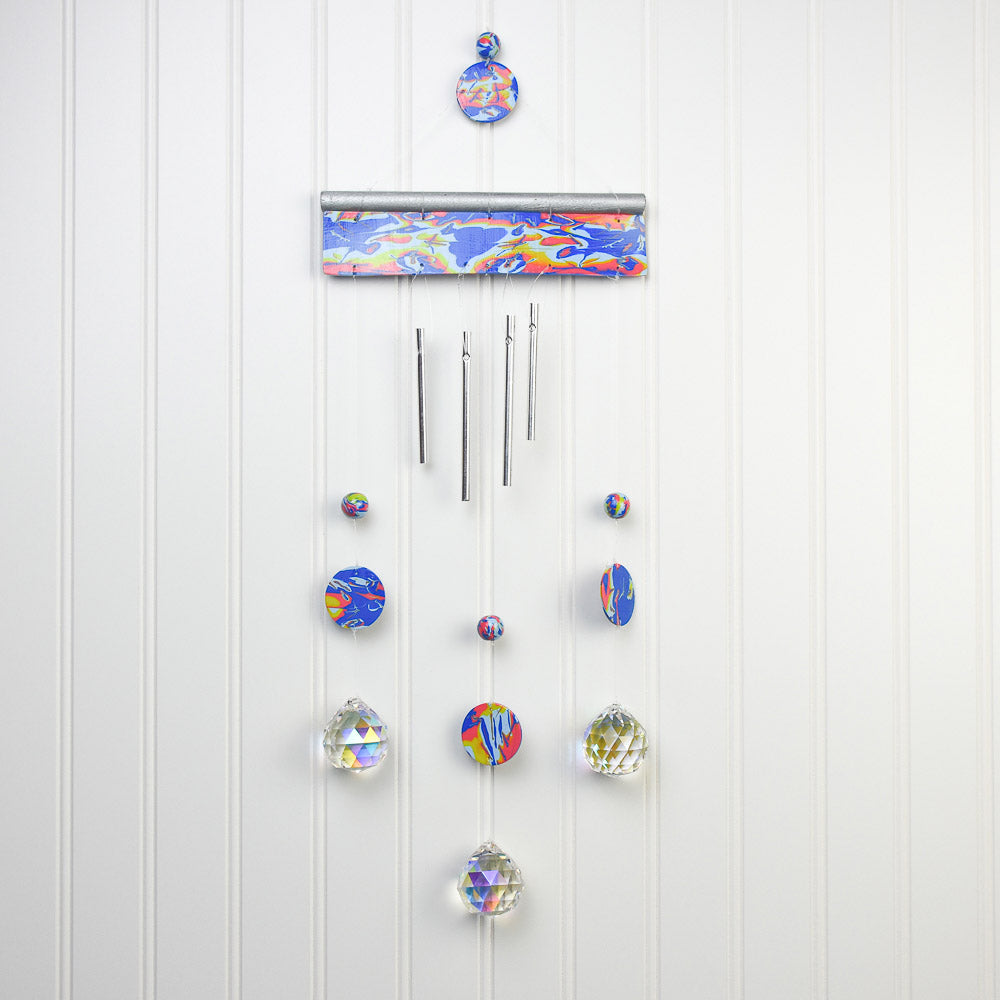Sculpey Premo™ Wind Chime Project
Sculpey Premo™ Wind Chime Project
Read More
Create and assemble this colorful wind chime in just an afternoon! What an addition to your garden or give it as a gift to that special friend.
Project time:
50 mins
Bake time:
Beads 50 mins
Disks and rectangle 30 mins
Read Less
ADDITIONAL SUPPLIES
- 4 wind chime bells
- 8-inch wooden dowel
- Outdoor metallic craft paint
- Crystals
- Fishing wire

Project Instructions
Step 1
Step 2

Step 3

Step 4

Step 5

Step 6

Step 7

Step 8

Step 9

Step 10

Step 11

Step 12

Step 13

Step 14

Step 15

Step 16

Step 17

Step 18

Step 19

Step 20

Step 21


Step 22

Step 23

Step 24

Step 25

Step 26


